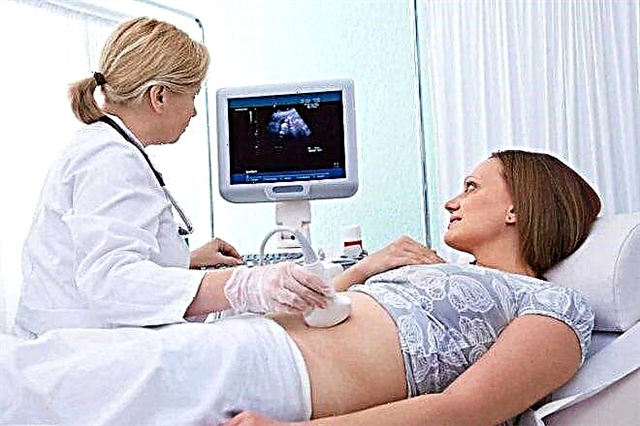
Expectant mothers, even if they have already had several births in their personal history, are always asked numerous questions about how the pregnancy is progressing, whether everything is fine with the baby. Naturally, primiparas have much more such questions. In order to closely monitor the development of the baby in the womb, it is important to accurately calculate your gestational age by week and day. This article will tell you how to do this.

The easiest way
The easiest way to find out what your current deadline is to within a week and a day is to use an online calculator. Such services are free, they allow literally in seconds to get not only the exact date, but also to find out what trimester it is, the month, how many days remain until the birth and when, in fact, the PDD is the estimated date of birth.
A clear understanding of where you are on a long journey will always come in handy, especially if you want to understand in detail what is happening to you and your baby at one time or another.
The calculator for pregnant women is a service that allows you to quickly get not only information about the due date, but also all other useful information:
- when your baby was supposedly conceived;
- how is the development of the crumbs by week;
- what changes occurring in a woman's body are characteristic of the current period;
- when you need to visit the antenatal clinic, pass certain tests, go through the next prenatal screening.

The calculator suggests calculating the gestational age by a single value - by the date of the last menstruation, or rather, by the first day of the onset of menstruation in the cycle in which conception took place.
Some calculators have additional capabilities - a woman can get an online consultation from a medical specialist, psychologist, social service specialist, lawyer, get information about maternity leave, payments and benefits and government support due to her and her family. This and other information will be useful not only for the expectant mother, but also for her relatives, including the future father.
There are calculator apps and online services. While the latter can be used directly on the website, the latter must be downloaded and installed on your mobile device.

How to count, self-calculation technique
The algorithm of the calculator for pregnant women is based on the obstetric method of calculating the gestational age, adopted in obstetrics not only in Russia, but throughout the world. According to the rules, the obstetric period is calculated from the first day of the last menstruation, since this date is beyond doubt. Everything else is shrouded in mystery. It is impossible to say exactly when a woman ovulated, even if she did ovulation tests and monitored the level of basal temperature, no one is safe from mistakes. It is impossible to find out the exact day of intercourse, which could lead to pregnancy.
A woman can conceive a baby only during the period of ovulation and within a day after it, such periods are limited by the viability of the egg that left the follicle... But sperm are more survivable and may well wait for ovulation already in the genital tract, having got there 3-4 days before the oocyte emerges.
If a woman leads an active sex life, often enters into an intimate relationship with a partner, then it will be impossible to really establish which sexual act has become decisive. Therefore, the date of conception is not considered to be the term. It is conventionally believed that from the middle of the menstrual cycle (when ovulation occurs), the embryonic period is counted - the real period of your baby's presence in your womb.
Cycles in women are different in duration, have their own individual characteristics. To average the timing, the so-called obstetric timing was introduced, which is based, in fact, on the only precisely known value - the date of the onset of menstruation. This day is considered the first day of pregnancy.
It may seem strange, but by the time of ovulation, the woman is already in the second week of pregnancy, and by the time of the delay, the fourth is over. This is why the doctor at the appointment a couple of weeks after the start of the delay says you have 6 weeks and does not accept any objection.

In total, pregnancy has an average of 40 obstetric weeks or 280 days. The calculator indicates the last day of the 40th week as the DA. In practice, however, the pregnancy can be shorter or longer. Delivery on any day between the full 38 and 42 weeks is not considered abnormal - it is normal urgent labor. Before 38 weeks, childbirth is considered premature, and after 42 weeks, they talk about re-walking.
The obstetric formulas help to correctly calculate the day on which the birth occurs (presumably). If you decide to calculate the term yourself, you can use any of them:
- you can add 9 months to the first day of the last menstruation and subtract exactly 7 days;
- subtract three months from the first day of the last monthly period and add exactly 7 days to the resulting value;
- add 280 days to the day of the beginning of the last menstruation.
Any of these methods will give the same result. In exactly this way, all obstetricians are able to determine the current period, make recommendations for months, and determine the PDD. But for the sake of simplicity, they do not resort to mathematical research, but simply use a round obstetric calendar with windows, comparing which, they get the date of birth.
Important! After IVF, it is customary to consider the period from the transfer of embryos, while taking into account what age embryos were transferred into the uterus - three days, five days, four days. For women who become pregnant during the IVF treatment cycle, there are special calculators.

Additional ways
The obstetric term is considered the most accurate today, and the rest of the methods are used mainly to confirm it. These include ultrasound diagnostics and counting by the first movements.
Ultrasound diagnostics (ultrasound) allows you to determine the very fact of uterine pregnancy, exclude an ectopic or frozen pregnancy, assess the pace of development of the baby... The program of scanners is based on the same obstetric counting algorithm, which is why a visit to the echographic diagnostic room begins with the doctor's question about the date of the last menstruation.
But this particular method is almost the only one that allows women with an irregular cycle to establish the gestational age with an accuracy of a week and cannot remember the dates of their last menstruation. Ultrasound for this purpose is relevant only in the early stages of pregnancy, until the end of the embryogenesis period (9-10 weeks).
During the period of the formation of internal organs and systems, all children undergo approximately the same development at a pace common to all. And after this period, children begin to grow and develop at different rates, according to the individual genetic program, which the baby owes not to anyone, but to his own parents.
It becomes very difficult to establish a more or less exact period after 12 weeks of pregnancy, because there are large, but there are miniature fruits, there are children with long arms and legs (to dad), and there are babies who are destined to have short stature and dense build from birth.

Therefore, women who do not remember the date of their last menstrual period are advised to visit an ultrasound specialist before the first prenatal screening (up to 12 weeks). This will help to establish a relatively accurate period of conception, then two weeks will be added to it, and the result will be a normal obstetric period.
By perturbations, the term was counted long before the advent and widespread use of ultrasound diagnostics. It is believed that women expecting the birth of their first child should feel the first fetal movements at about 20 weeks, and those giving birth again - at 18 weeks. Previously, women were asked in consultation about the date of the first movements, it was entered into the exchange card as an important diagnostic component. It was believed that the date of the first movements is exactly the middle of the gestation period. In the case of expectation of the first child, 20 weeks were added to it, and in the second pregnancy, it was possible to calculate the due date by adding 22 weeks to the date of the first movement.
With the advent of ultrasound, the need to mark the date of the first movement has disappeared by itself. She has too big errors. Women often wishful thinking and take the fermentation of intestinal gases in the intestines for movements, or, conversely, do not pay attention to movements, taking them for peristalsis. Most often, women who give birth for the first time find it difficult to name the date of the first stirring. For them, these sensations are new, unfamiliar, unusual, so not everyone is able to recognize them in time.

The reliability of the calculator
Often women ask themselves the question of whether they can trust the results of calculations obtained on an online calculator. Calculators calculate the obstetric term correctly and accurately, there is no doubt about it. The actual timeframe may differ, but neither programs nor doctors can foresee this possibility. With late ovulation, for example, a discrepancy of about a week may occur.
It will be possible to notice this later, when, for a period of up to 12 weeks, the ultrasound results will show that the development of the baby is somewhat behind the norm, after the end of the first trimester the difference will become insignificant, therefore the error may go unnoticed.
The accuracy of the due date is relative. Statistics show that no more than 5% of births occur on the day of PDD, the rest of the children prefer to be born earlier or later. But this is precisely why the title contains the word "supposed".
For information on how to calculate the gestational age in weeks and calculate the due date, see the next video.



